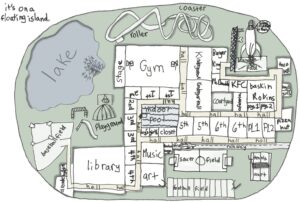Needs Assessments
We believe that a truly actionable space program must be based on who you are or WISH TO BE and what you NEED TO DO to achieve this. From there, we can determine what spaces you SHOULD HAVE in your facility.
Thus, the development of your space program begins with a thorough assessment of the occupants you wish to serve, the activities you wish to support, and the culture you wish to promote. Operational, functional, and organizational contexts will also inform space requirements, as will external influences such as standards, codes and regulations.
The Needs Assessment includes various activities and discussions with a range of stakeholders allowing to collect information needed to translate your needs into physical spaces.
Space Programming
At its essence, Space Programming is a translation of needs into spaces that accommodate those needs. Not unlike the ingredients of a recipe, the types, sizes and quantities of spaces to be included in the finished project are defined.
While it may seem to be a relatively straightforward task, developing a space program is a complex process with many factors to consider, a multitude of variables, subjective interpretations, and nuances. Programming must consider both current contexts and projected needs for a largely unknowable future. Programming must accommodate fluctuations in educational programs and delivery methods, operational strategies, demographics, user groups, seasonal activities, community needs, partnerships, code requirements, security needs, national mandates, state and local regulations, and funding - to name a few. Additionally, a space program must clearly and accurately communicate the required physical parameters to the design team of architects, engineers, and builders who will create your school facility.
We believe that a program of space requirements should inspire creativity and innovation during the design and construction phases in addition to inspiring the occupants of the finished product.
See some of our tools in use:
A Student-driven example:
What should your school BE? What should it HAVE?
Below is a sketch response from a team of 5th grade students, along with our playful interpretation of their ideas and insights:

For a playful example of our space programming process, we have interpreted some student insights gleaned from the student sketch above:
What should our school BE?
Fun, interesting, unique, secure, organized, playful...
What should we be able to DO?
Play, perform, read, learn, eat, swim, make art, play music, stay fit, play sports, welcome visitors from anywhere, take field trips to Mars!
What should it HAVE?
Playground and play fields, classrooms, library, music and art rooms, gym, pool, food court, launching pad and runway...
